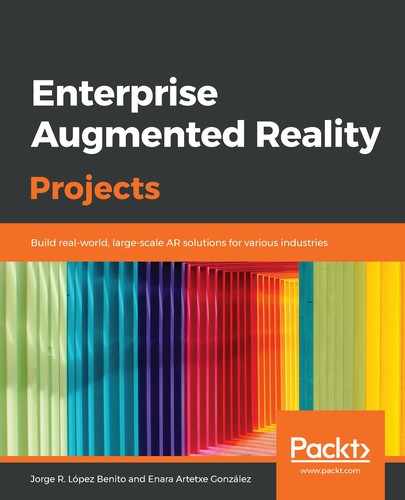AR is mainly a visual technology. Although it can combine other effects such as sounds to make the experience more realistic or vibrations on the phone when we are playing a game, its main attraction is the visual content it displays over the real world. That makes this technology perfect for enhancing traveling experiences, from showing skyline information to making animals in a museum come to life or even translating signs and guides in real time.
Back in the late 2000s/early 2010s, when smartphones started to become popular, some of the first AR apps that appeared were tourism-oriented. In 2010, for example, the Museum of London released an iPhone app that showed historical photos of the city over the real places. This example has also been carried to other cities and scopes, such as in Navarra, Spain, where users can replay scenes of famous films shot in different locations of the region in AR by pointing their mobile devices to the panels that had been placed in said locations. In this case, the mobile devices use image recognition (the panel) to launch the AR experience. However, back in the early 2010s, the most stable and widespread AR technology was location-based and used a device's GPS, accelerometer, and compass. AR engines and apps such as Layar and Wikitude were mostly used as they allowed developers to generate routes, gymkhanas, and even games based on points of interest (POIs) across cities.
Nowadays, some of the most common uses of AR in tourism are as follows:
- To serve as a live guide in the streets of a new city, where a user can go around the city while the AR app is showing them where the most interesting points to see are through the use of arrows.
- To show attractions and POIs over a map. Here, when a user points at a map with the camera, the POIs pop up from it and they can interact with them to find out more.
- To provide extra information about paintings, sculptures, or monuments. Here, when a user points at a painting, it can show a video about the artist and the place and time where it was painted, or even make it come to life as a 3D simulation.
Apart from all these experiences, when AR is combined with other immersive technologies such as virtual worlds or 360º videos, the experience goes one step ahead, allowing users to visit several places at the same time (for example, in a museum network, while visiting one of them, to be able to virtually visit the others).
In this chapter, we will learn about how to mix these experiences using Apple's ARKit SDK to create an art experience. We will create an AR portal, and when users go through it, they will land on a painting represented in 3D. In our case, we will use a painting from Van Gogh (Bedroom in Arles) that's been downloaded from Sketchfab to give the users the illusion of being inside a 3D Van Gogh painting: https://sketchfab.com/3d-models/van-gogh-room-311d052a9f034ba8bce55a1a8296b6f9.
To implement this, we will create an app oriented to the tourism field that can be displayed in museums, galleries, and more. Regarding the tool we are going to use, in the next section, we will explain how ARKit works and its main features.
